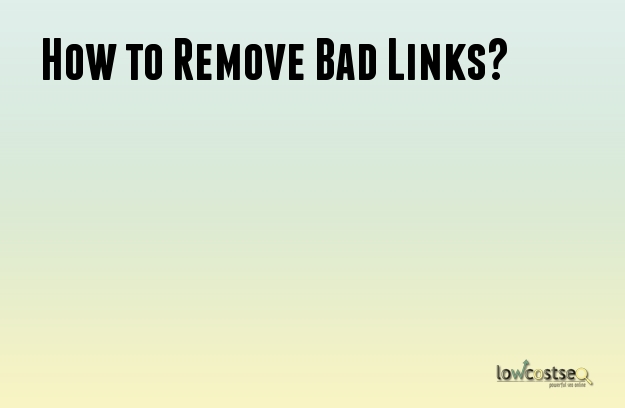
How to Remove Bad Links
If you have decided to get the bad link removed then the best option is to contact the webmaster of that particular site. Most sites have a contact form on their web pages for users to get in touch with the webmasters, but if a site does not have one then check its Whois. (To find the owners email address). If the details are hidden on there, then simply make a note and move to the next one.
Make sure when you approach these sites, you are polite and have a standard set approach for each directory or article site. This is most assuredly save you a lot of time. Have a note of who you have contacted so that you can try again later. It is vital to be persistent in this sort of a process.
Using Google’s Disavow Tool
The Disavow Tool from Google is a great way to remove bad links from a site. It simply allows the user to disassociate their site from the low quality sites or bad links that are linking to them.
How to use this tool?
It’s pretty straight-forward, you must have an account set-up on Google webmasters if you have not done so. After creating the account, visit the Disavow Tool page on which you will be able to create a text file that will list all the URL’s that you wish to disavow. Once again it is important to be organised so that you know which sites you have contacted and which you could not do so.
A few Warnings for us
We advise not to rely too much on this tool and suggest to best remove any bad links you have manually. The disavow tool should be used as the last option to you. In addition, Google too has stated openly that they view this tool in the form of a “request”, which implies there is no guarantee that they will honor or accept your request.
All in all, first try to remove the bad links manually as you do not want to give Google the impression that you are a poor webmaster. Only use the tool to remove the worst possible links after all alternative options have failed.
A Few More Tips from Lowcostseo
If you want to speed up the “bad link removal” process then better be organized.
Create a template email which you can use to send out for bad link removal requests and do make notes on a daily progress of the process. (Each reply should be noted down).
If you are still seeing more low quality bad links appearing on your site then it is best to address this issue first before thinking about the removal process. It could be that you have attached your site to a link wheel or any automated link building system. Take action on this first.
Keep everything consistent: make sure you review your site’s links every 3 to 4 weeks to assess the quality of the links you are creating.
Finally make sure you always practice White hat SEO techniques to build high quality links. If you are consistently building high quality links then this will dilute the lower quality links which implies you do not need to worry about any removals at all.
Check to see if Your Site Penguin-proof?
By now you must have understood that checking your site’s links regularly is the best way to protect your site. By being organized in the link building process and regular link reviews, you may gain a competitive edge over your rivals who are not engaging in such a process.
The sad truth is that there are no guarantees as to what you must follow to avoid being hit by a Penguin update. No one can predict what Google will roll out next, we can all merely debate and discuss the effects of an update and provide the best viable solutions to them.
Tell us if your site has been hit by the Penguin update? Did you check your link profile? Tell us what techniques have you followed to remove the bad links from your site? We would love to hear about your experiences as SEO is all about learning from each other.
